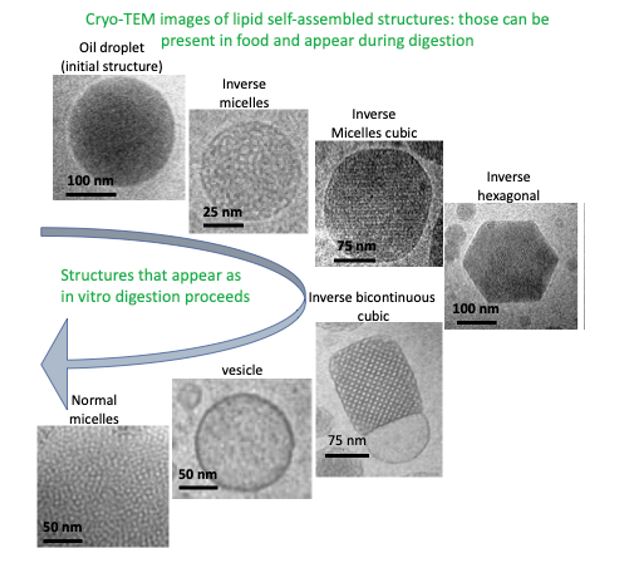Video Article Open Access
Lipid Self-Assembled Structures: From Nature, Theory to their Applications in Food
Laurent Sagalowicz
Institute of Material Sciences, Nestlé Research, CH-1000 Lausanne 26, Switzerland
Vid. Proc. Adv. Mater., Volume 2, Article ID 2110237 (2021)
DOI: 10.5185/vpoam.2021.10233
Publication Date (Web): 22 Jul 2022
Copyright © IAAM
Graphical Abstract

Abstract
One of the main objectives in the development of new food products is to guarantee good tasting as well as bioactive efficacy. This challenge has been reinforced in recent years with the development of plant-based products for better sustainability and to account for the increasing flexitarian, vegetarian and vegan demand. Since vegan diet is inherently poor in certain micronutrients, there is a need for fortification, which could be associated with issues in term of taste and nutrient loss. For example, iron, which is very reactive leads to oxidation of other nutrients and frequently off-taste generation. Lipophilic nutrients like omega-3, vitamins A and D are often unstable and likely to degrade during food product process and shelf life. Finally, other molecules like vitamin B12 can be poorly absorbed in the human organism. Classical micro-encapsulates obtained by powder technology are outstanding for dried applications. However, they are usually not efficient in liquid products and expensive.
Lipid self-assembled structures are present in living organisms [1] and more particularly in cell membranes, mitochondrias and endoplasmic reticulums. Therefore, they are one of the primary structures existing in living matters, and research is more and more inspired by mother nature to utilize them in a similar way in fabricated products [2]. During the presentation, we will show how self-assembled structures occurs in nature and their presence in milk and in the digestive track [3] will be outlined. The presence of sub-micrometres domains of lipophilic, amphiphilic and hydrophilic domains offers many functionalities. They can be used to control release of certain nutrients and consequently increasing their efficiency in the human body (e.g., increase of vitamin bioavailability). These structures can similarly modulate the molecular reactivity to improve oxidation stability. We will also show that they can increase the Maillard reaction yield [4]. Maillard reaction is the chemical reaction between an amino acid (present in a protein) and a sugar, which leads for example to the aroma of bread or cooked meat. Particular emphasises will be brought on the relation between structure features [5] and the obtained macroscopic properties. Finally, self-assembled structures have the advantages to be easily processed. They can be made from ingredients, such as phospholipids that are naturally present already in many food products.
Keywords
Self-assembled structures; colloids; lipids; interface; micelles.
References
- R. Mezzenga, J. M. Seddon, C. J. Drummond, B. J. Boyd, G. E. Schröder-Turk, L. Sagalowicz; Advanced Materials, 2019, 31.
- L. Sagalowicz, M. Michel, I. Blank, O. Schafer, M. E. Leser, Current Opinion in Colloid and Interface Science, 2017, 28, 87.
- S. Salentinig, L. Sagalowicz, M. E. Leser, C. Tedeschi, O. Glatter, Soft Matter, 2011, 7, 650.
- L. Sagalowicz, C. Moccand, T. Davidek, R. Ghanbari, I. Martiel, R. Negrini, R. Mezzenga, M. E. Leser, I. Blank, M. Michel, Philosophical Transactions of the Royal Society A: Mathematical, Physical and Engineering Sciences, 2016, 374.
- D. Demurtas, P. Guichard, I. Martiel, R. Mezzenga, C. Hebert, L. Sagalowicz; Nat Commun., 2015, 6.
Video Proceedings of Advanced Materials

Upcoming Congress



